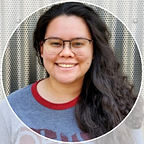OSU and CCAD Define the Future of CASE Mobility — Part 4
Closing the Gap between Research and Design
In Part 3 of this series we followed the students as they experienced autonomous transportation in MCity, rode side by side with Share Mobility drivers, and documented countless hours of passenger observations on the COTA bus system. All of which culminated into critical insights for both the end user and the shared mobility provider. These insights would serve as the foundation upon which their final design is based.
With the foundation firmly in place, the team set out on the next phase of their project — bridging the gap between research and design. To support this mission the team packed their suitcases and headed to CES 2020 in Las Vegas, Nevada.
CES, the “Consumer Electronics Show,” is the world’s largest and most influential technology event. It showcases over 4400 technology vendors and hosts over 170,000 people with 2.9 million net square feet of exhibit space in 11 official venues sprawled across Las Vegas, NV. Here the team spent 4 days fully immersed in technology hardware, content, technology delivery systems and more. The team’s mission at CES was to experience the latest in technology advancements and decide for themselves if and how these technologies might help meet the needs of their target customers and set their product apart from the competition.
Understanding that a brand is more than just a name and logo, it’s a full sensory experience. — a relationship established at every point of interaction. The team set out to discover enabling technologies that would help define the relationship they desired to create with their customers and ultimately set them apart from the competition. Here’s a sneak peek at what they discovered at CES.
Sound: This section encompasses the highlights of what we saw in relation to sound, included but not limited to means of notification through audio, noise cancelation, and immersive music and entertainment.
Sight: Tech specifically used for visual entertainment as well as eye gaze and eye interactive communication/
Touch: Tech in this section is related to touch, not only as means of interacting with the environment, but also perception through tactile sensation.
Taste/Smell: Tech in this category relates to everything related to scent and flavor, if paired they created a nuanced and unforgettable sensory experience.
Speaking of competition, who exactly are the competitors in the world of autonomous electric shared mobility? The team found a few contenders at CES. Panasonic, Audi AI:ME, Hyundai Mobis, Bosch iOT, LG Adient, and Toyota e-Palette to name a few. The students explored each concept vehicle in detail, searching for the elements that distinguished one model from the next. Closely evaluating the features and design aesthetic that defined the brand.
Their observations led them to understand one clear message: CES is tech at heart. All good designers know that a product that does not first serve the customer is a product destined for a short life. In the world of autonomous electric transportation, there is too much focus on the tech and not enough on the customer. These observations forced the team to look at what was missing from the competition and to consider deeply what they wanted to provide for their customers.
To distinguish their product from the competition, the team centered their concept on the soul of the vehicle — the element that excites customers and engages sensory interactions, welcoming passengers into the total mobility experience. The vehicle structure will then be designed to allow the optimal user experience, and the technology systems will be pushed to the background — supporting but not overwhelming the customer.
The students returned from CES with a clear strategy in hand and hit the ground running on concept development. Check out this video summarizing the students’ CES journey and the start of their concept design.
Stay posted to see the first MVP of the students’ concept vehicle. And check out our website to learn more about student innovation at 99P Labs!
You can also click here to see 99P Labs takeaways from the virtual CES 2021!
